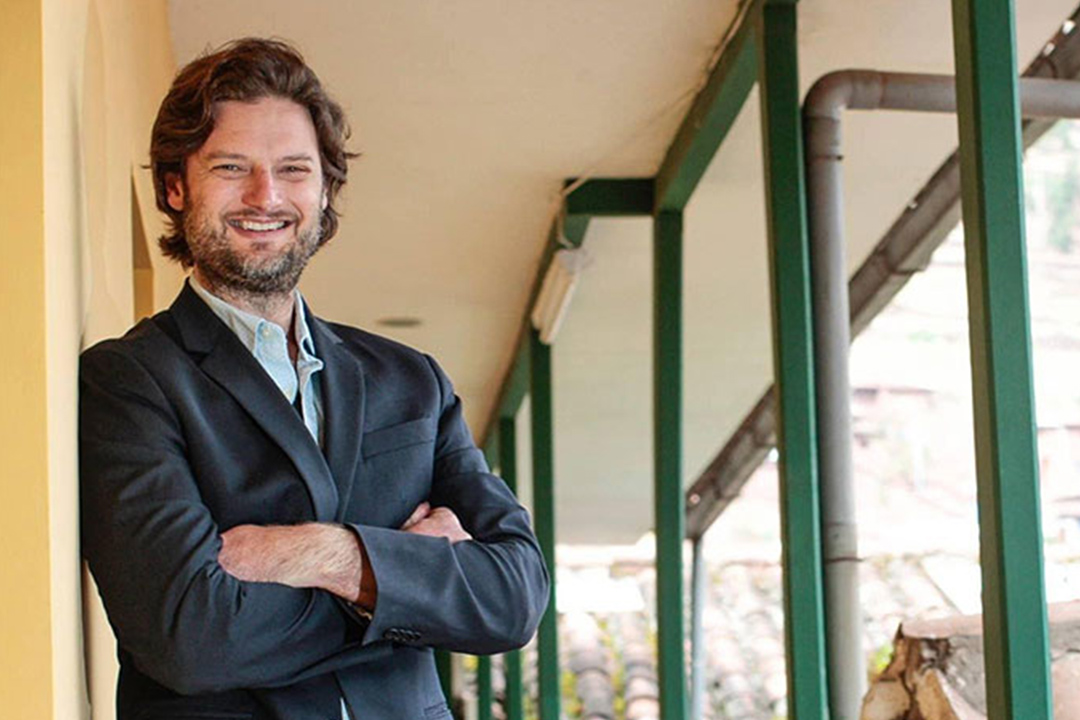JUNE 29, 2022 — The Institute of Texan Cultures (ITC) has given a voice to the experiences of people from across the globe who call Texas home since its opening in 1968. In 2021, UTSA embarked on a robust community engagement process to envision the next 50 years of the ITC and its museum, the only resources in Texas devoted entirely to the state’s rich, diverse history.
The ITC Centennial 2068: Community Stakeholder Visioning initiative seeks to provide current and future generations with a greater awareness of and appreciation for Texas’ unique cultural heritage by expanding the institute’s research and storytelling through new programming, greater use of technology, and the exploration of topics at the intersection of culture and current events.
As part of this initiative, UTSA has brought on board Steve Kosiba as ITC faculty liaison, to share in this visioning process as UTSA imagines a vibrant and contemporary future for the ITC.
“I envision the ITC giving us a sense of the depth of and creativity in local cultural practices, providing a unique view of the diversity.”
As ITC faculty liaison, Kosiba will primarily serve as a liaison to UTSA faculty and facilitate the integration of the ITC’s collection with college curricula. He will also serve as an investigator on grants involving the ITC, facilitate the creation of digital humanities projects related to Texan cultures using ITC and UTSA collections and contribute to strategic planning involving digital humanities and the ITC.
“San Antonio is filled with vibrant cultures, it’s so captivating,” Kosiba said. “There is just so much out there. There are symbols, murals, dances, recipes, and songs that have deep roots in the area’s native, colonial, and modern pasts. People continue many practices from the past, but they are also reimagining them and innovating new ways of representing their communities.”
Kosiba continued, “These cultural practices, in other words, are not just relics from the past—they are essential to our present and our future. I envision the ITC giving us a sense of the depth of and creativity in local cultural practices, providing a unique view of the diversity that has long shaped San Antonio, and Texas.”
With the ITC Centennial Initiative moving forward, Kosiba has also been placed on the search committee for ITC’s next leader. The position, entitled associate vice provost for public engagement & research/chief curator, will guide the strategic direction of the ITC through the visioning process.
Interim Head Curator, Veronica Rodriguez, spoke on the importance of hiring on Kosiba as faculty liaison.
“Dr. Kosiba’s role is vital to fully integrate the ITC with UTSA as we continue to develop opportunities for our students, faculty, staff and South Texas communities to utilize the rich resources found at the institute,” she said. “His experience with digital humanities and working with indigenous communities will help the ITC expand its reach considerably.”
Kosiba, is a Department of Anthropology associate professor. A Chicago-native, he has made his career in archaeological research specializing in the indigenous peoples and cultures of ancient South America — primarily examining the Incas and Spanish colonialism. His research takes a look at authority and power structures of the Inca domain, but he differs from other scholars by turning from an emphasis on elites and palatial cities, to instead highlight the experiences and lives of the Andean people who lived throughout Inca and Spanish rule.
This historical lens, and in particular this keen attention to the intersection of Spanish and indigenous American cultures within modern settings such as Peru and Texas, will help Kosiba to work with local stakeholders in San Antonio to better identify and understand unique stories about contemporary life that are essential to their communities and their futures.
In addition to his passion for storytelling, Kosiba brings with him a wealth of expertise in digital humanities.
Partnering with museums in Peru, he is working to amplify people’s accessibility to history through updated websites including interactive maps, apps, and animated stories. He has created 3D models of Inca artifacts able to be shared and distributed internationally. Kosiba has even been able to explore more technologically advanced projects such as overlaying augmented reality of ancient Incan structures and streets onto modern infrastructure as the cities exist today.
“With the digital humanities, we are always thinking of creative new ways to tell these stories. This includes stories not only about the materials and the artifacts that are housed in an institution such as the ITC, but the stories of people in context. That’s where a lot of us can find resonance,” said Kosiba. “Technology can help fill this need in exciting and interactive ways, enabling access to ITC resources to a much broader audience. I look forward to exploring our options with the ITC.”
Combining both the storytelling and technological opportunities together, Kosiba hopes that both native San Antonians and visitors alike will choose to engage with the ITC to learn more about the rich history that surrounds them.
